
Gogoro’s battery-swapping network is world-renowned for making EV charging obsolete in dozens of models of electric scooters and motorbikes. The system uses smart connected batteries and thousands of swap stations that allow riders to roll up, swap batteries, and ride off — all in less time than a fuel fill-up on an ICE vehicle. And now that I’ve gotten my own Gogoro S2 ABS electric scooter, I’ve finally had the chance to experience the system firsthand.
Gogoro going global
Gogoro has already begun expanding from its home of Taiwan to other Asian two-wheeler hot spots like India, China, and Indonesia. But when it came time for the company’s first westward expansion, they didn’t have to go too far to land in Israel.
And in true sabra style, I made sure to elbow my way to the front of the line to finally get my hands on my own Gogoro scooter.
Both the Gogoro S2 ABS and the Gogoro 2 Plus models are currently being imported to Israel. I chose the Gogoro S2 ABS due to its higher performance and awesome iridescent indigo paint job.
The S2 ABS is priced at 20,000 NIS (US $5,600), compared to the 2 Plus at 17,000 NIS (US $4,790). Both of those prices are higher in Israel due to exorbitant local taxes. For example, an entry-level Tesla Model 3 SR costs $48,000 in the US but closer to $69,000 in Israel. So there’s a decent chance that if Gogoro comes to your country, you’ll pay less than us.
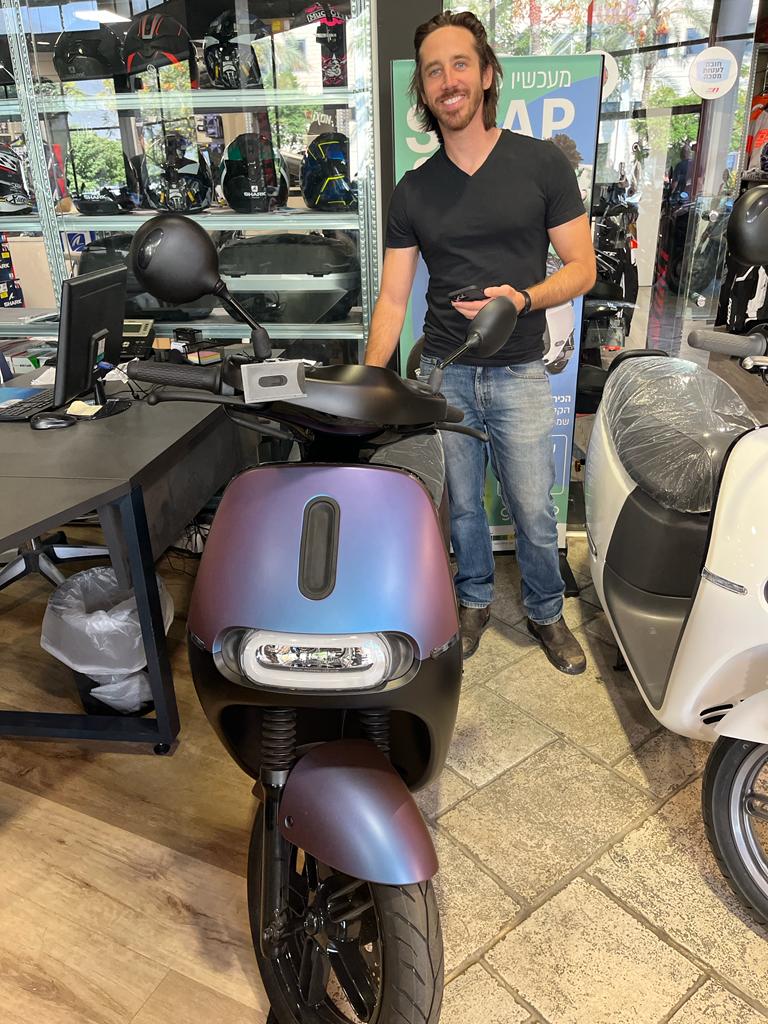
Gogoro S2 ABS delivered
The delivery is more of a pickup, which happens at the local dealership. Despite being technology-packed, the Gogoro S2 ABS scooter is actually quite easy to operate and the overview only takes about five minutes to learn the controls, features like proximity unlocking, etc.
In fact, most of the time is spent creating an account with Gogoro in the company’s app, which lets you control the scooter and find battery swap stations.
Due to Gogoro’s unique model of creating both the battery swapping network and electric vehicles that use it, the company had to partner with two different outfits to make it all work in another country. Metro Motor serves as the motorcycle importer/dealer while Paz Group manages the swap stations.
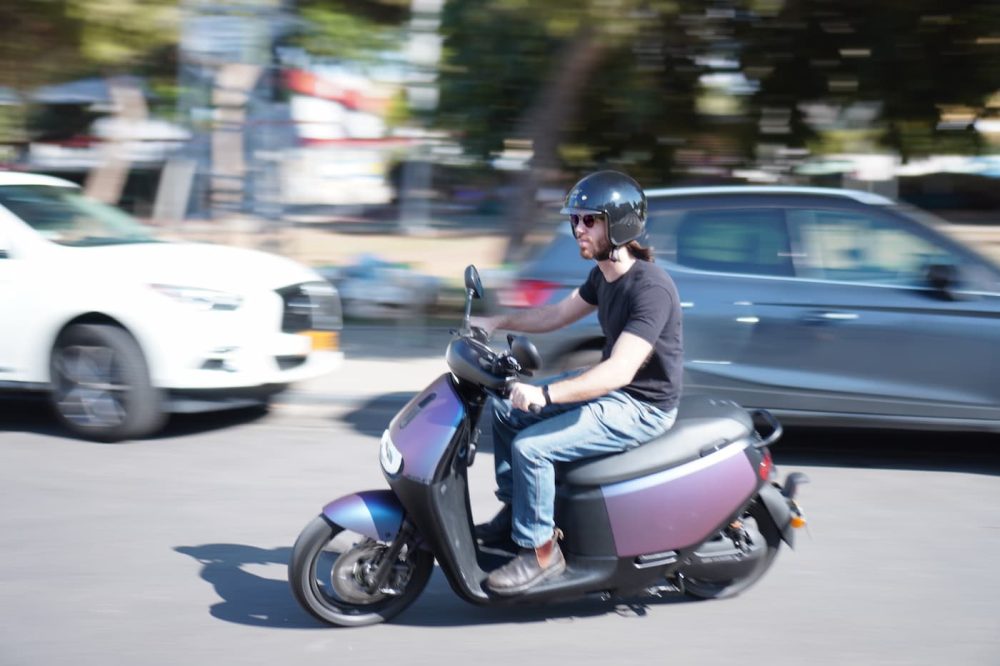
Right now there are around a dozen of Gogoro’s GoStations spread around the Tel Aviv metropolitan area, with most at Paz’s gas stations and a couple at Metro’s dealerships.
You can find the swap stations in the app and use it to navigate to them, though once you visit them for the first time, you just kind of remember where they are.
Most are spread around Tel Aviv, but a few are dropped in the suburbs around the city, helping extend the possible reach of Gogoro scooters even further outside the city.
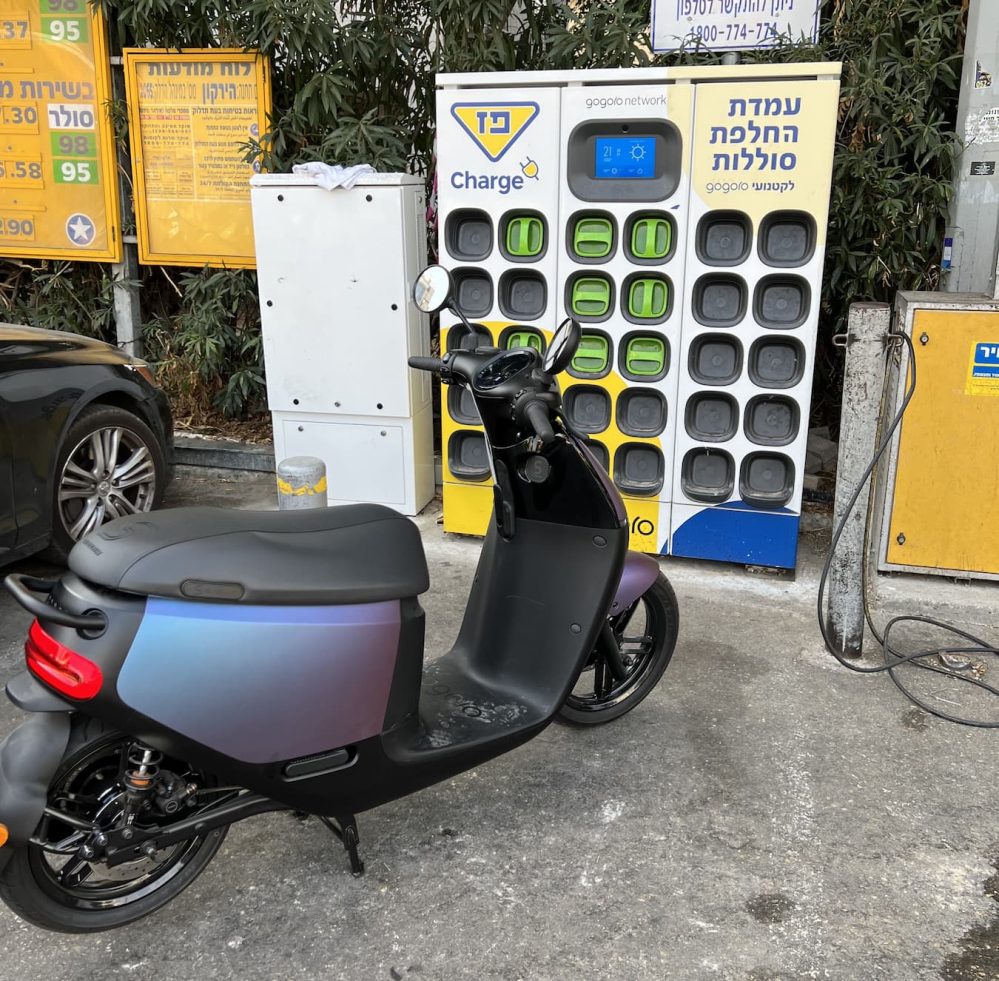
Gogoro’s battery-swapping procedure
Swapping is amazingly simple. There’s no membership card, no NFC key, no nothing.
I simply roll up to swap station, slide my used batteries in the dock, and the machine spits out two freshly charged batteries. I then pop them back into my Gogoro S2 ABS scooter and ride off. The entire thing takes perhaps 45 seconds, including parking and leaving.
It’s that simple because the batteries are smart enough to know whose scooter they were in, and they communicate all of that info back to Gogoro’s home base. When I pop the batteries into the dock, the GoStation knows they came out of my scooter.
It then decides which batteries to give me based on how I ride. A higher-performance rider will likely get newer, fresher batteries while a granny rider might be given batteries that are a few years old and still work fine, but would drain faster at full power. At least that’s the way the system works in Taiwan. Here the batteries are all about a month old, so we’re all getting the good stuff.
The membership is 129 NIS (around US $37) per month, and like any good dealer trying to get you hooked, they give you your first taste for free. Actually, your first six months are free.
It’s more expensive than just charging up on your wall outlet at home, but you’re paying for the convenience of never charging and never lugging your batteries back and forth from a parking spot to your apartment or house. Though there is a home charger accessory for those that want to do that.
Considering there’s basically zero maintenance here, $37/month is pretty much your only cost of ownership.
The GoStations are distributed throughout the city so that you’re basically never further than 2-3 miles (3-5 kilometers) from a battery swap station, and usually you’re much closer than that. For example, the closest GoStation from my apartment is about 2 km (1.2 miles) away. I have four GoStations within a 3.3 km (2.1 mile) radius of me.
I’ve only had the Gogoro S2 ABS for about two weeks, but I’ve put 202 miles (325 km) on it so far, and so I’ve gotten a pretty good feeling of it as far as range goes.
I find that if I’m staying in the city then I can push my range close to 60 miles (96 km). But when I venture out of Tel Aviv or take the urban highways that let me open the scooter up to its top speed of 59 mph (95 km/h), my range is closer to 45 miles (72 km).
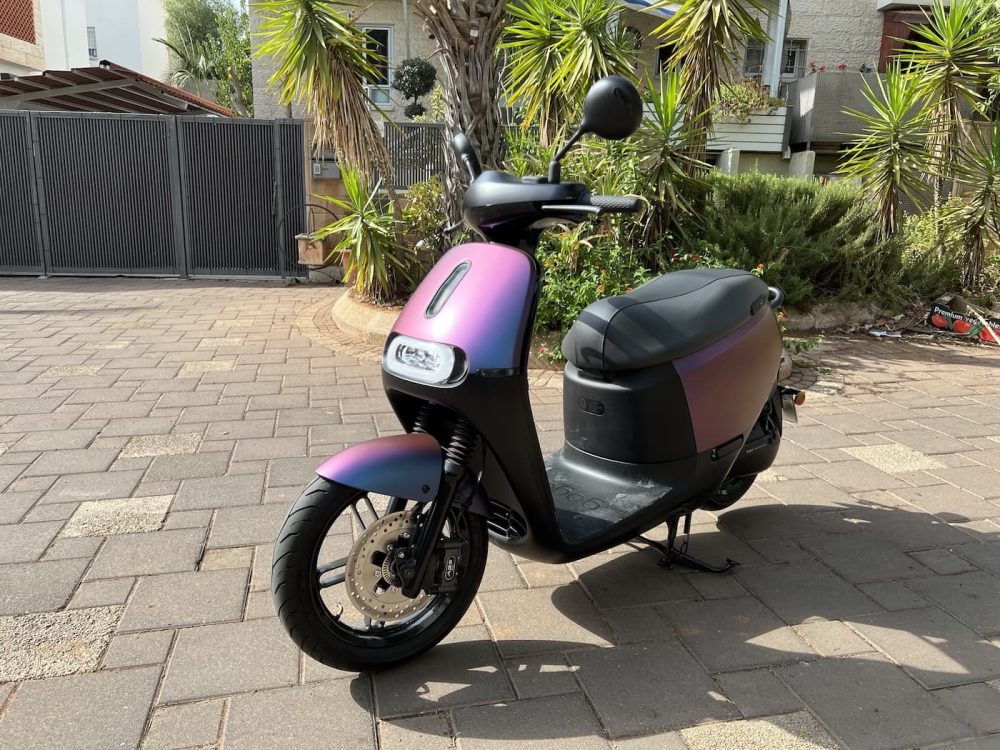
Long highway rides with my wife on back sap even more energy.
Neither of us are big people, but I find that fast highway riding with two people can easily cut the range in half compared to slow city riding with a single rider.
A few days ago my wife and I went to a party in Netanya, which is a couple cities north of Tel Aviv. With entirely highway riding and two people on board, I got the worst range so far at around 37 miles or 60 km (based on around 30 miles between swaps with 20% battery remaining). But even in that “worst-case scenario,” I had no problem traveling to multiple cities away from the closest battery swap station. On the way back, we stopped at the first station on our way and instantly had a full charge again.
That was a bit of a pioneering excursion, since as you can see by the map below, we poked way the heck out there and far from any local swap stations back in Tel Aviv. But with a promised three dozen or so stations by the end of this year and over a hundred stations in the next two years spread out over a larger geographic area, you can see how charging becomes a thing of the past. Instead of planning how much range you have on a charge, you’ll simply stop by a swap station whenever you start getting low. You know, kind of like the gas station model. Except that instead of needing the entire footprint of a gas station, you only need the space taken up by something the size of a couple refrigerators.
How’s the Gogoro S2 ABS itself?
The Gogoro S2 ABS is an awesome electric scooter for the city. Even putting the convenient battery swapping aside for a moment, just the scooter is already a perfect urban vehicle.
I can go anywhere in the city while slicing through traffic (lane splitting is legal in Israel), meaning I usually get where I’m going in half the time of cars or less. I use a tiny fraction of the energy while doing it. And it’s the most fun way to cruise!
The seat is comfortable for two riders, and the 7.2 kW liquid-cooled motor is plenty peppy to launch me out ahead of all the other cars and motorcycles when the light turns green. The ABS braking offers quick, confident stops, and the regenerative braking means I don’t even have to rely on the disc brakes very much.
The scooter is smart enough to unlock when it senses my phone as I walk up to it. That’s a feature I love, since it’s great to have one less key in my pocket.
Even smaller touches like the extra deep bag hook are a great addition to a city scooter that is likely going to be carrying groceries. I picked my wife up at the mall just last week after she finished “supporting the economy,” and all of her bags fit right in there without feeling like we’d lose anything at 50 mph on the way home.



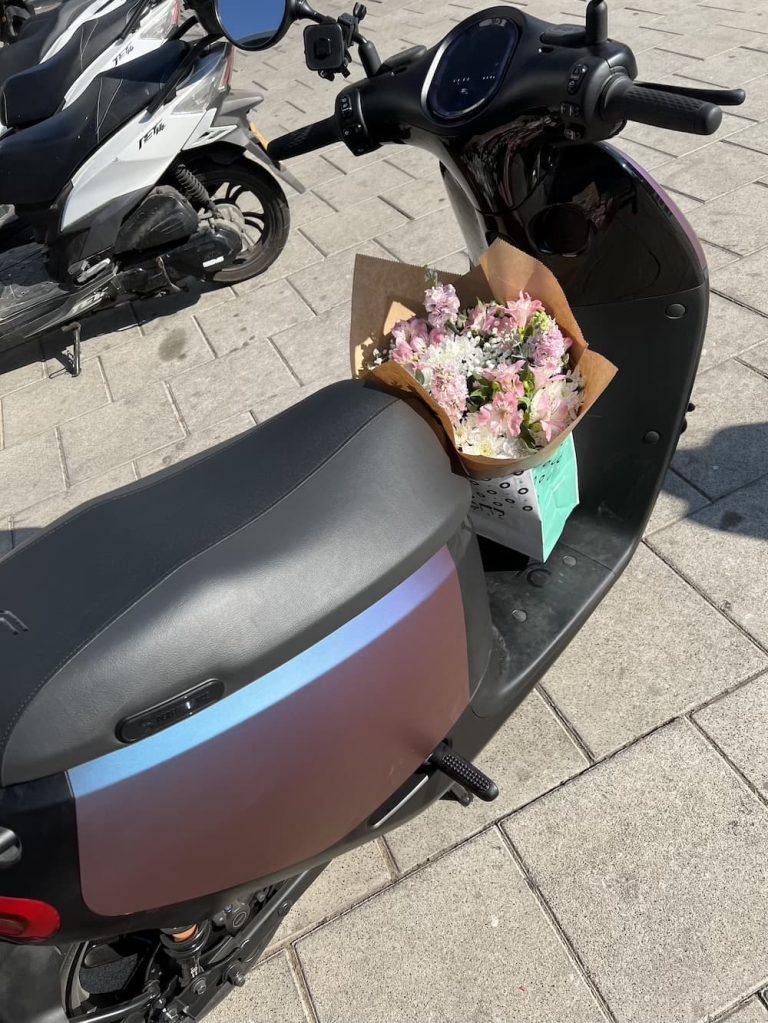
I’m a big fan of the included storage under the seat. It’s big enough to fit a full face helmet, not just a small half or three-quarter helmet.
It also means you don’t have to add a rear cargo box just to get storage, which can be a great utility option but kind of ruins the lines of the pretty scooter. I may add a storage box at some point, but I’m trying to avoid it. Having all that underseat storage helps me justify leaving the box off while still having plenty of utility storage. I’ve filled that underseat storage area with groceries, shopping, clothing, you name it.
I even leave my armored motorcycle jacket in there when I park somewhere so that I don’t have to carry it with me.
Speaking of which, here’s a quick note on safety: I always support wearing all of the proper safety gear all of the time. That’s the ideal situation. In some of these pictures you’ll see me wearing less than that. When I’m staying in the city and especially in my neighborhood, I sometimes get a little more cavalier (hence the T-shirt and the three-quarter helmet). But when I’m taking faster roads, I usually opt for my full motorcycle gear. That means armored jacket and armored jeans, moto gloves, full-face helmet, etc. We all have to make our own riding decisions, but you should consider what’s at stake, especially when riding at higher speeds on larger roads.
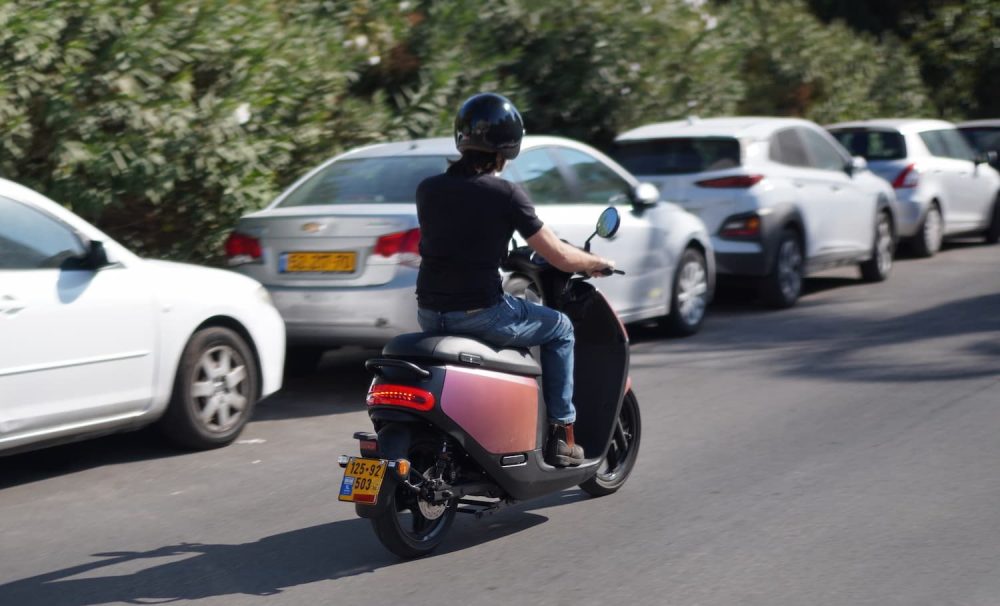
Gogoro has an amazingly wide range of accessories on their Taiwanese site, but we don’t have many accessories available yet in Israel.
I’m excited to add a bunch of new parts to my scooter, including a rear seat rest to make my wife feel more secure, an organizer in the underseat storage, front and rear cameras, perhaps some fancier mirrors and more.
But first I have to figure out how to order that stuff from Gogoro Taiwan.
Are there any downsides?
So far there’s only one downside I can find. The scooter is surprisingly loud.
The noise comes from the chain drive, which is necessary due to the mid-motor design. Unlike my NIU electric moped, which uses a hub motor, the Gogoro uses a central motor with a chain drive to transfer power to the rear wheel.
There’s actually a Gates belt drive version as well, and I wish that we had the quieter belt option here in Israel. But for now, this is what we have. I’ve gotten used to the chain noise, but for such a quiet scooter it is still quite noticeable. You’ll never hear the chain on ICE-powered scooters and motorcycles due to the loud exhaust, but it’s all you hear on electric two-wheelers.
More to come!
This is far from a full review, as I’ve only had the Gogoro S2 ABS for a few weeks.
I’ll be sure to follow up with an in-depth review, including a video review, after I’ve spent some more time on this machine.
Until then, let me know what questions you have in the comments section below. I’ll be sure to address the areas you’re most interested in during my follow-up review.
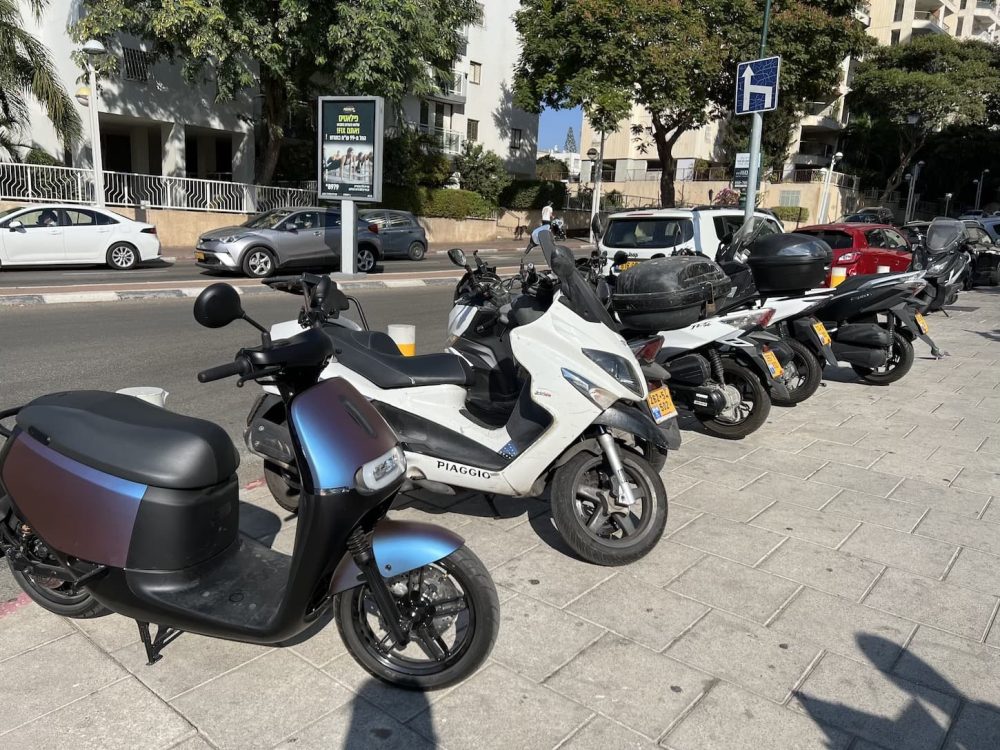
Subscribe to Electrek on YouTube for exclusive videos and subscribe to the podcast.
Author: Micah Toll
Source: Electrek



